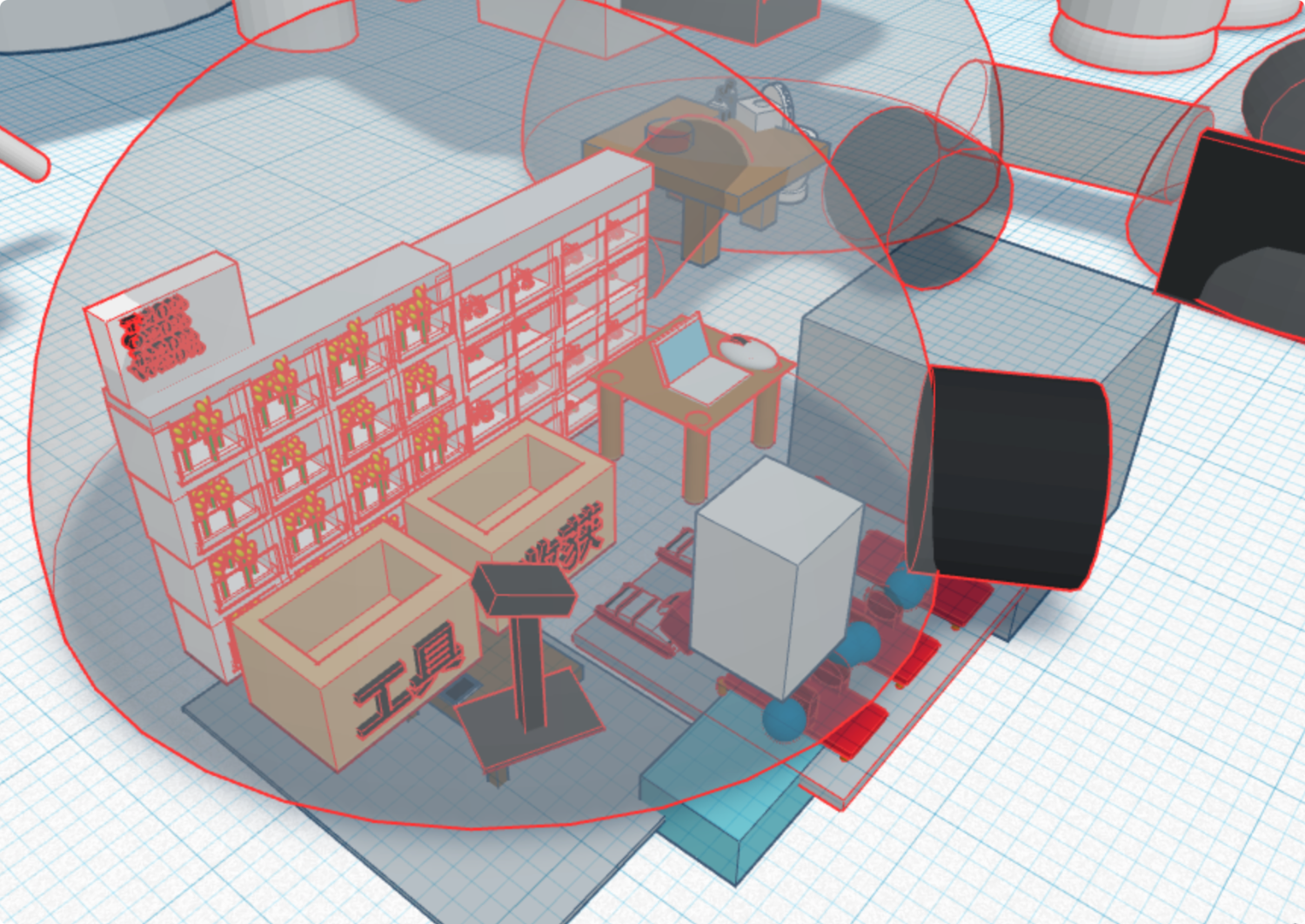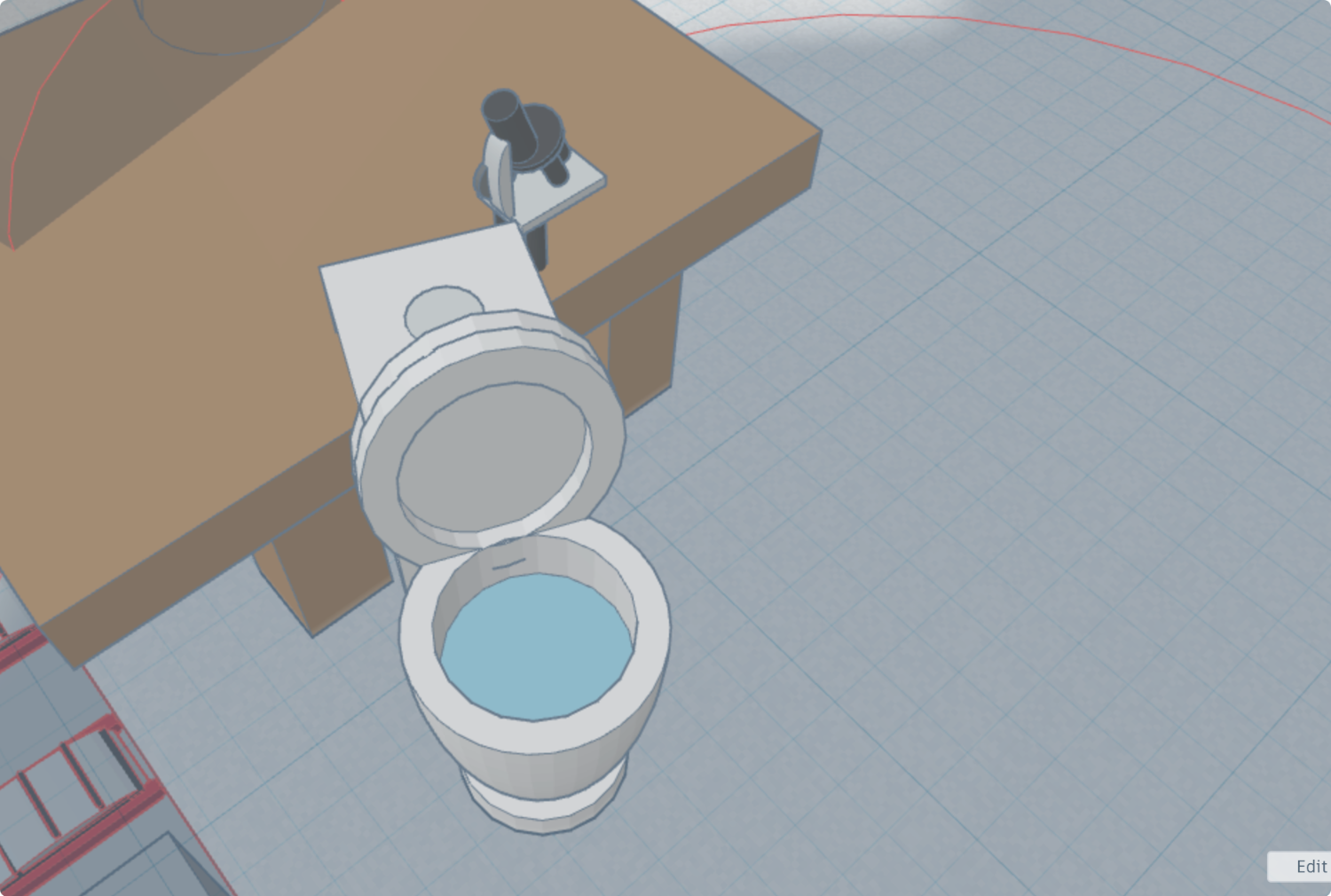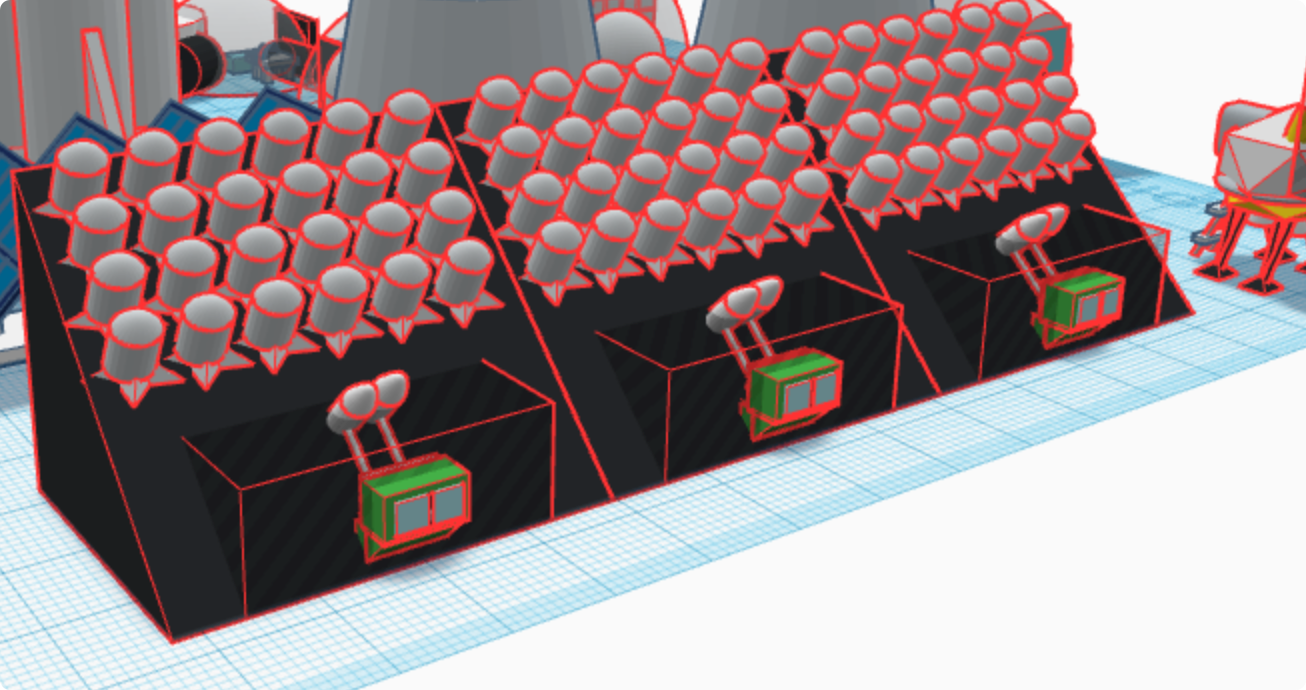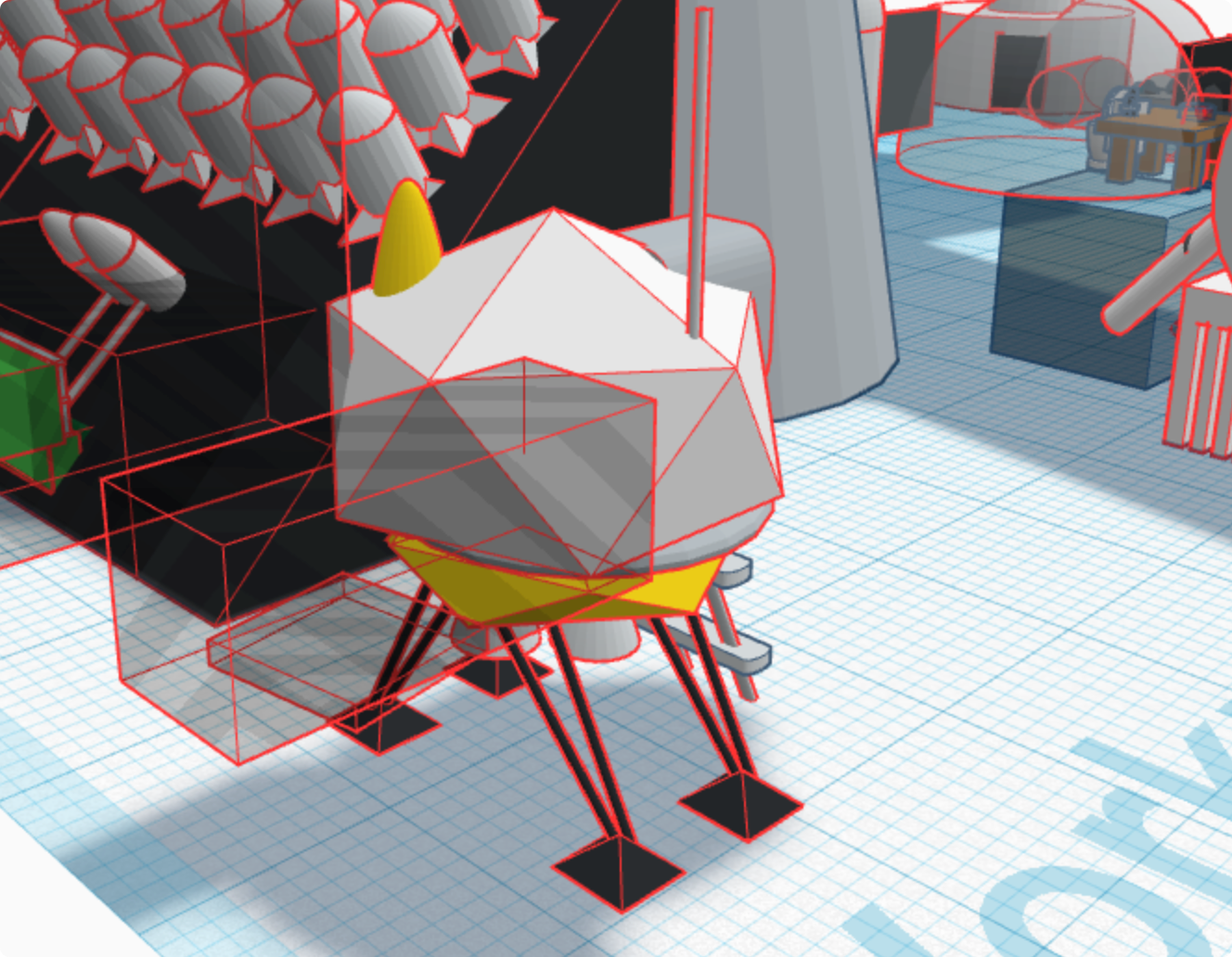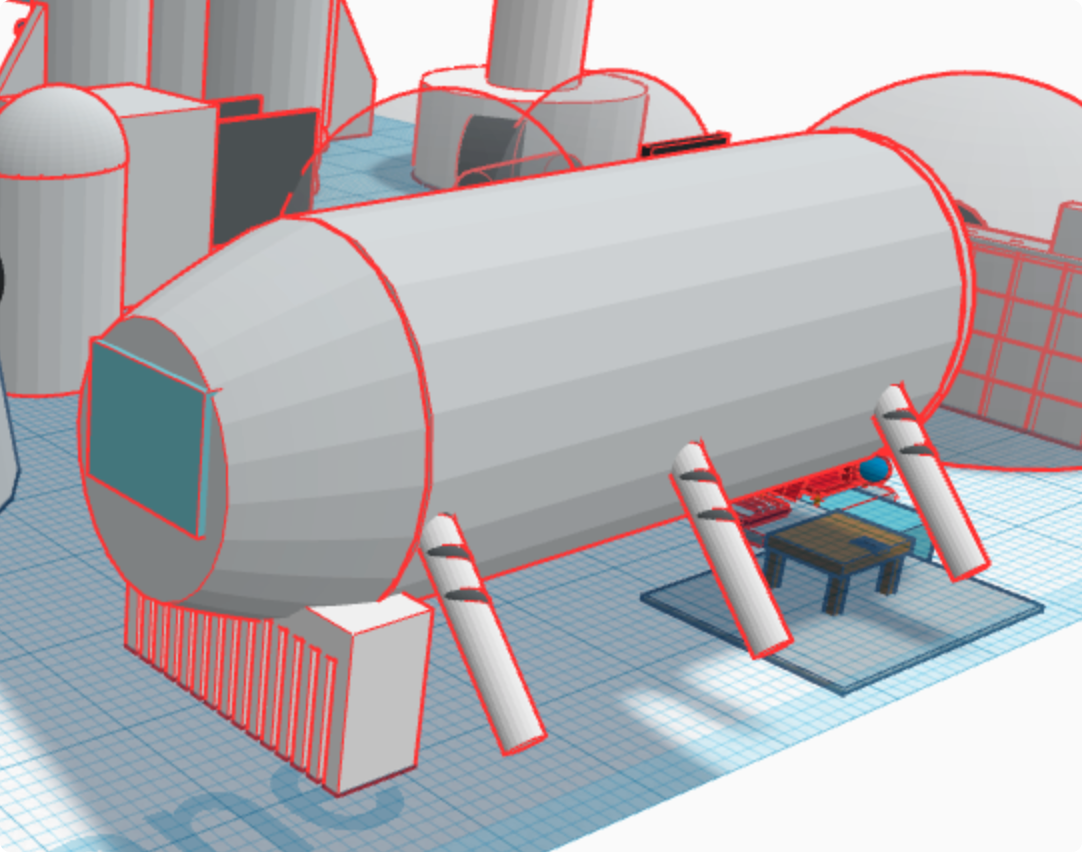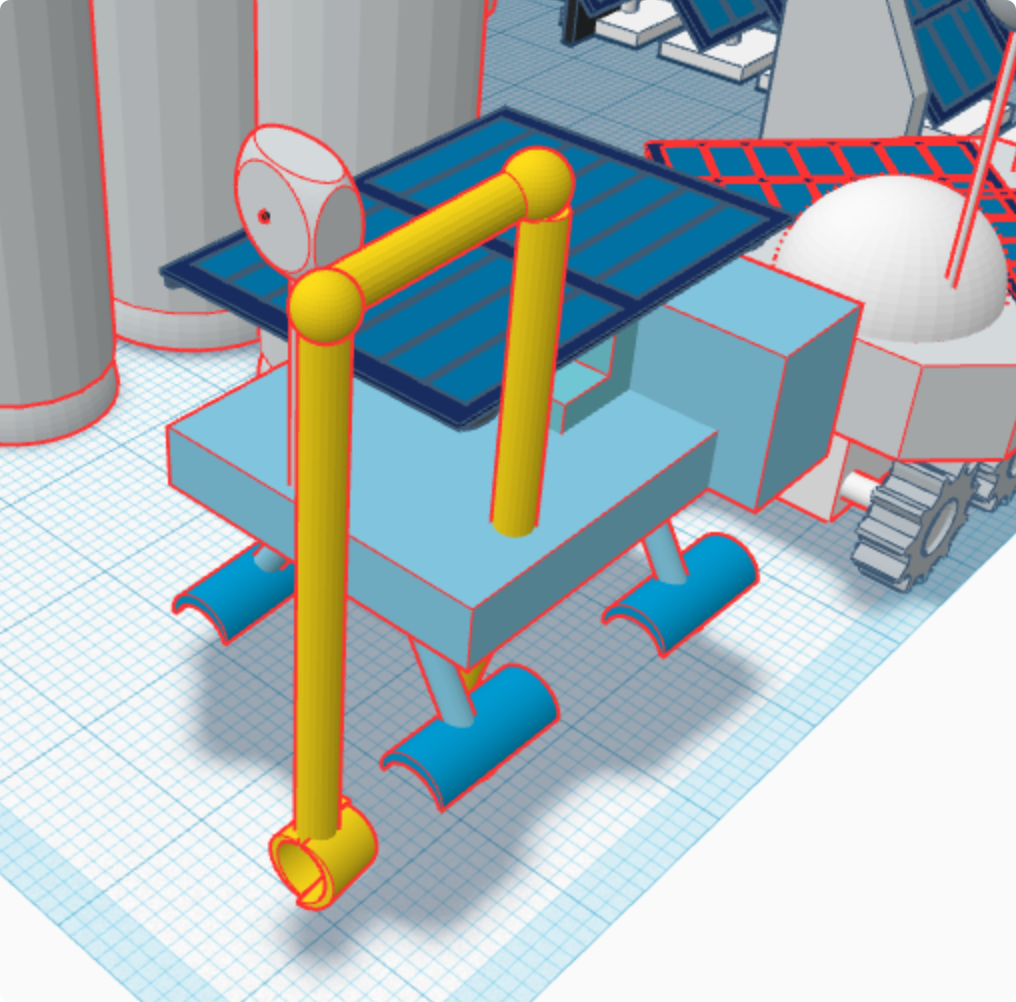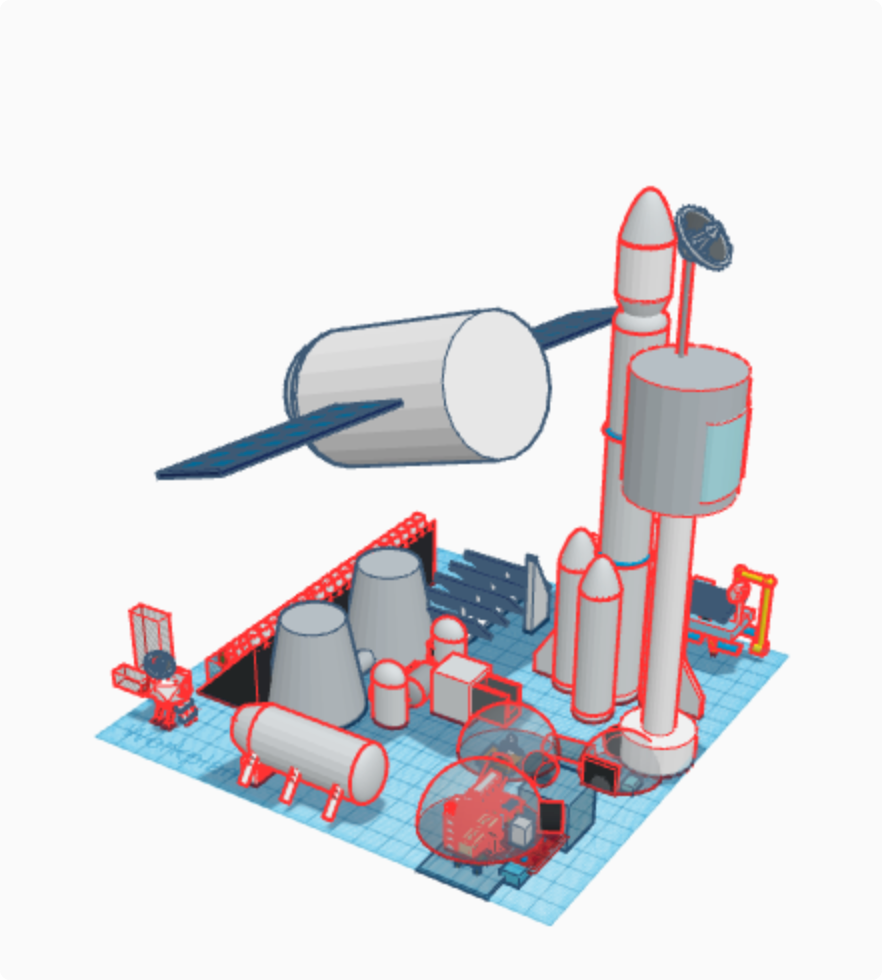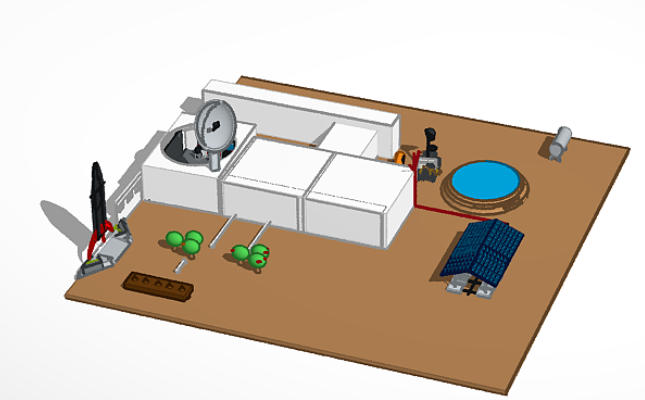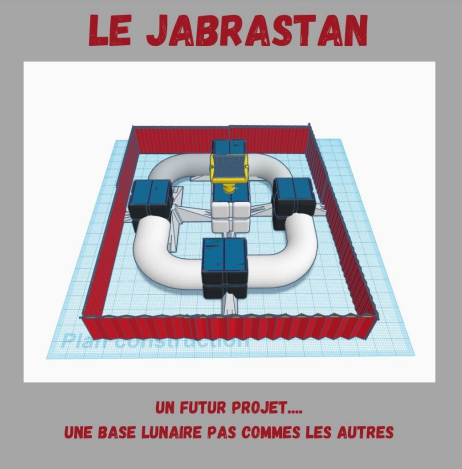Moon Camp Explorers Gallery 2021-2022
In Moon Camp Explorers each team’s mission is to 3D design a complete Moon Camp using Tinkercad. They also have to explain how they will use local resources, protect astronauts from the dangerous of space and describe the living and working facilities.
Team: The Other
Overseas Chinese Academy of Chiway Suzhou Shanghai China 10, 9 4 / 0
External link for 3d
|
Project description
Our project is divided into a water recycling system, an energy system, an air system, a base defence system and a food supply system. In the water cycle system, our general principle is to cut costs and save money, to use as much water as possible, and to use as little as possible, preferably none at all. In the energy system, we mainly use solar energy. For the air system we use pipes to connect the various base sections. For the food system we have arranged a number of space planting capsules in the base to enable soil-less cultivation. |
||||
|
Where do you want to build your Moon Camp?
Close to the lunar poles Why did you choose this location?
We built our moon-base on the south pole. Because on south pole the temperature doesn’t change much and there are many things to discover. Such as the moon water… we also choose this place because there is enough sunlight so the solar panels will be more useful. How do you plan to build your Mooncamp? Which materials will you use?
Our main principle in building a lunar base is to use materials locally, as the cost of bringing materials from Earth to the lunar base is prohibitive. We use the latest 3D printing technology to use some of the ores and lunar soil that are already available on the Moon as raw materials, and we use chemical reactions to obtain other materials used in the construction wherever possible. |
||||
|
Water
|
Food
|
Electricity
|
Air
|
Protection
|
|
We have a Lunar excavator for the water problem. The Lunar excavator has a heating drill to break though the rocks and ice. the Lunar excavator would heat the drill first. Next it would use the heated drill to dig through the rocks. When it finds a block of ice, it would pick the block of ice and put it in a container. When he arrives at the moon-base it would dump it in a container and heat it, melt it and filter it until it is clean water |
We build our greenhouse because of the food problem. We planted some wheats, radishes, potatoes and onions. We planted the radishes because it could grow fast and the other plants, we changed their DNA to make it grow faster and more nutritious. The green house is split in half. One half is the plants, and the other half is bugs. We choose bugs because the bugs are easy to hatch, and they have more nutritious than the plants and we have a senser to look the plants if there are plants which has fully grown. |
Our energy system is primarily solar powered. The reason for this is that launching a flying chess piece to a lunar base itself requires a lot of energy, and we use a lot of energy brought over from Earth in the early stages of building the base, and we use solar power to keep the base running during the construction phase. |
The dust collector rover use the big brush to scoop up the dust and rocks. Then the dust and the rocks is then went to a thin square to get out the big rocks, the thin rocks would be heated up to 950 degrees Celsius and turn to air |
The turret is for the protection for the moon-base. It has 72 bullet and a car carried with nuclear bomb, these are the protection for the little and large asteroids. |
|
Describe a day on the Moon for one of your Moon Camp astronauts
7am (GMT) – Wake up and put on the arm band to record ECG data for the Bio Rhythms experiment 7:05 am – Wake up activities (astronauts complete their morning hygiene routine, eat breakfast, etc.) 8:30am – Morning daily planning meeting 8:45am – Early morning set-up 9:00 am – Base status check 9:05 a.m. – Return to Earth of previous day’s data from base 9:25 am – Prepare equipment for conducting maintenance 10:25 am – Exercise on the treadmill 11:25 am – Personal CO2 monitoring data collection 12:25pm – Blank (break time – usually not so much, but they work weekends too so make up some time) 1:10pm – Ethernet cable swap (Ethernet cable swap) 1:15pm – Camera setup (documenting maintenance work for Ground Control) 1:25pm – Fill out nutrition lab questionnaire to assess food frequency 1:35pm – Lunch 2:35pm – Free time 3:05pm – Advanced resistance exercise (advanced resistance exercise device – a microgravity version of weight lifting) 4:35pm – Perform a space walk 4:40pm – Install vacuum access port in Node 1 to provide vacuum for visiting craft to be parked 7:00pm – Computer configuration check for materials science research 7:35pm – Weekly astronaut office/astronaut meeting 7:55pm – Bedtime (time for evening activities, such as dinner, etc.) 8:25pm – Weekly flight director/astronaut meeting 8:45pm – Regular evening daily planning meeting (astronauts discuss with ground team what was accomplished during the day and what is planned for tomorrow) 9:00pm – Bedtime activities continue 10:30 pm – Bedtime |
||||


